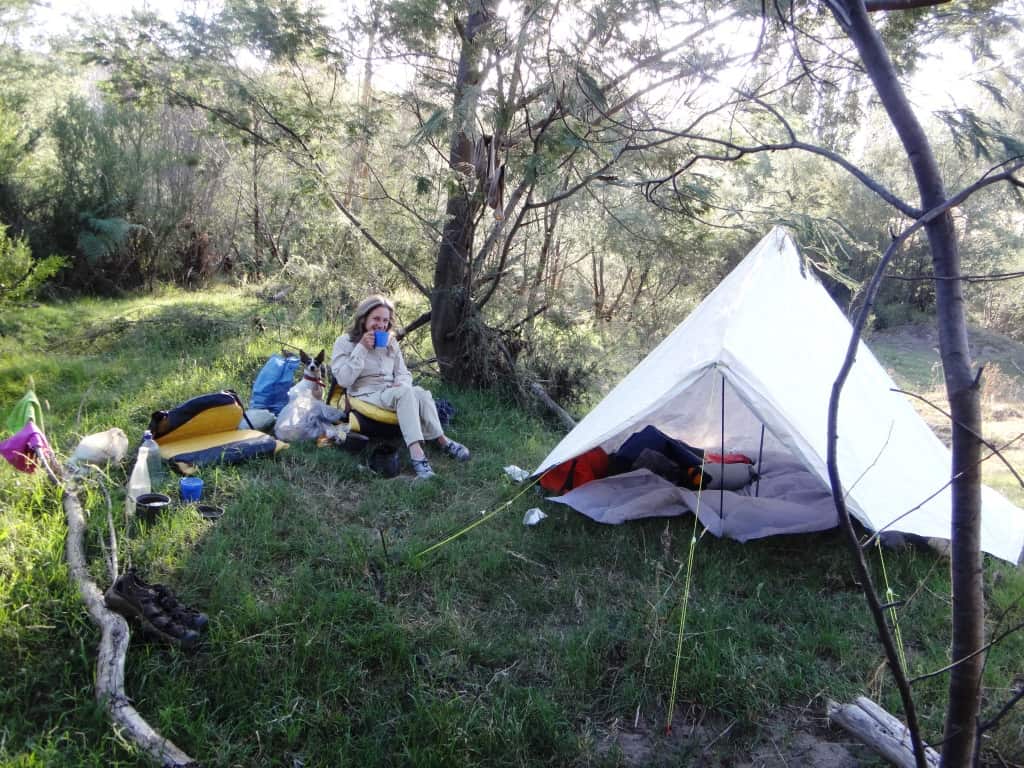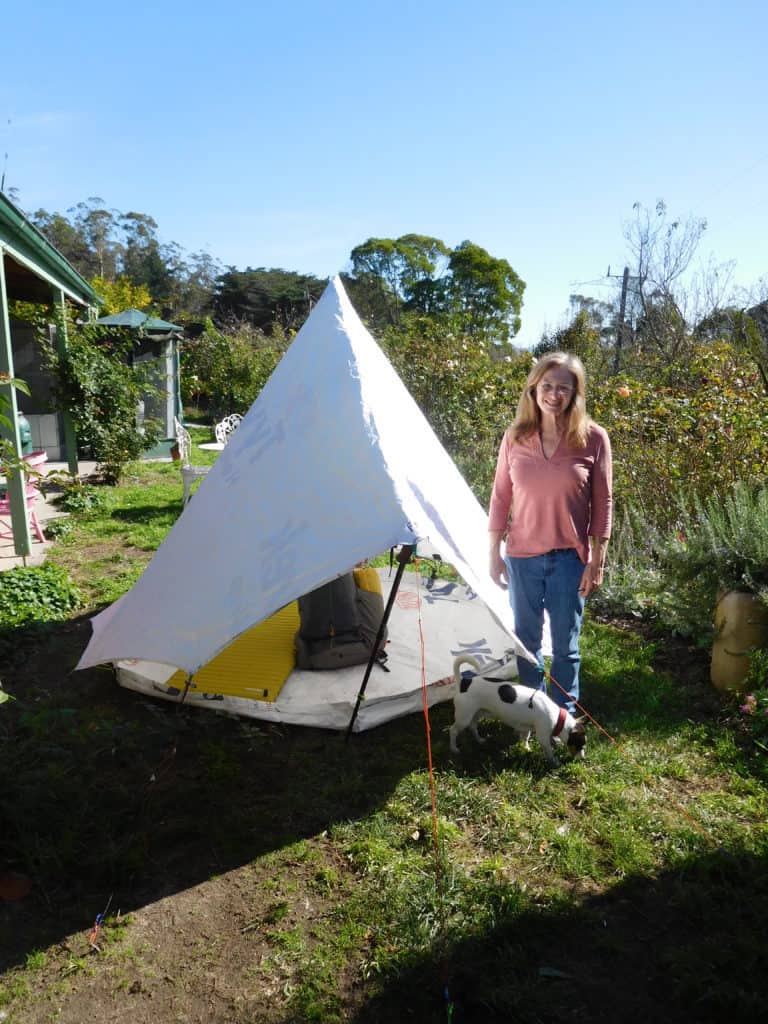I have been thinking about my Tyvek tent designs again: I believe I can now make an approx 6 foot high, zero condensation ‘fire’ tent for 2-4 people which will weigh under one kilo including floor and zipperless mosquito netting and which will set up against a tree or with the aid of a hiking pole/stick. Similarly I think I can make a one person design (with about 1.5 mtre head height) at about 500 grams. It will be a few days before I have time to cut them out and make them as I have other projects.
NB See Also my new post DIY Tents
The beauty of Tyvek is: it is (relatively) fire/spark resistant (800C); it can be joined/repaired with tape; it is waterproof and breathable; it comes in 3 metre roll widths; it can withstand 160 km winds; it is cheap (30 metre roll at $180; ie 4-5 tents per roll); it does not drape; it weighs 1.7 oz/ sq yd (50gsm); it is white and has an R-rating so reflects and retains heat well – so wonderful for a winter fire heated tent. To my mind, a tent where you cannot stand/sit out of the rain whilst being warmed by a fire is pointless.
Am also working on a sub 100 gram fire heated electric generator for charging batteries or electronic gear such as eBook readers/music players. I have no interest in making money out of these tents so will probably post the completed designs for interested folks in future. You do not need to be able to sew to make a Tyvek tent as it does not fray, can be joined with tape and works well with tarp holder tie-outs.

Some of my tent designs: The Deer Hunter’s Tent, The Siligloo, the Pocket Poncho Tent, the 10 x 10 Tarp, the Whelen Forester Tent, the Tyvek Tipi…
NB See Also my new post DIY Tents
See also:
http://www.theultralighthiker.com/does-spot-like-to-hunt-deer/
http://www.theultralighthiker.com/tyvek-solo-fire-shelter/
http://www.theultralighthiker.com/tyvek-tent-designs/
http://www.theultralighthiker.com/tyvek-twin-fire-shelter/
http://www.theultralighthiker.com/one-pole-tyvek-tipi/
http://www.theultralighthiker.com/tyvek-bivi/
http://www.theultralighthiker.com/new-tyvek-forestertent-design/
http://www.theultralighthiker.com/tyvek-jack-russell-rain-coat-13-grams/
http://www.theultralighthiker.com/catenary-curves/
http://www.theultralighthiker.com/ultralight-chairgrounsheet/
https://www.theultralighthiker.com/2019/09/29/ultralight-waterproof-fabric/
https://www.theultralighthiker.com/2017/12/30/the-siligloo/
https://www.theultralighthiker.com/2017/08/10/the-pocket-poncho-tent/
https://www.theultralighthiker.com/2016/05/12/the-deer-hunters-tent/
https://www.theultralighthiker.com/2019/05/25/seamless-tyvek-tipi/
https://www.theultralighthiker.com/2019/09/24/10-by-10-tarp-update/


Hello there,
Do you sell those tents at all? I have read your blog for a while now and I admire your ethos and DIY skills!
Thanks,
Manuel
Thank you Manuel. I don’t sell them at the moment but I am moving in that direction. I will start in the next few weeks by posting some patterns which you and purchase to make your own. Later on I may get someone to make them so I can sell them. I am a bit reluctant to launch into a new enterprise at my age. Keep watching. Cheers, Steve.
I’m curious about a full fledged tarp tent, like a design similar to a ZPacks duplex or tarp tent pro trail, with the sewn fabric being tyvek rather than Dyneema or sil-nylon. I’m guessing that the tyvek is just too flimsy to hold up.
It depends on what you mean by ‘hold up’ John. Reinforcing the tie-outs is important. I have used some (tents) for years but the main reasons I at least prototype with Tyvek are that is cheap and available, it comes in 10′ widths so less sewing, it ‘stands up’ beautifully, it resists burns and holes from campfire sparks, it is easy to repair with Tyvek tape, it gives a beautiful fresh appearance and is easy to find your camp in the bush therefore…I could go on. Dyneema is just too expensive and delicate to even contemplate. After I have ‘perfected’ a design I always make myself a model in a lighter silnylon (for longer walks). I am going to a .77 oz/yd2 material from Ripstopbytheroll for my next ‘Grey Flyer’ tent. In that material the very large roof will only weigh around 210 grams including guys and tie-outs. It will double as a hammock tarp coupled with a Hummingbird hammock which weighs around 200 grams including suspension system and various whoopie slings I have added to it to improve its functionality. Being able to sleep in a tent or a hammock improves one’s survival chances enormously when things turn ‘pear-shaped’ as they sometimes inevitably will. Cheers, Steve.
That is a really nice design.
Thanks Dorothy! Cheers, Steve.PS: May be making some of these available in the future.